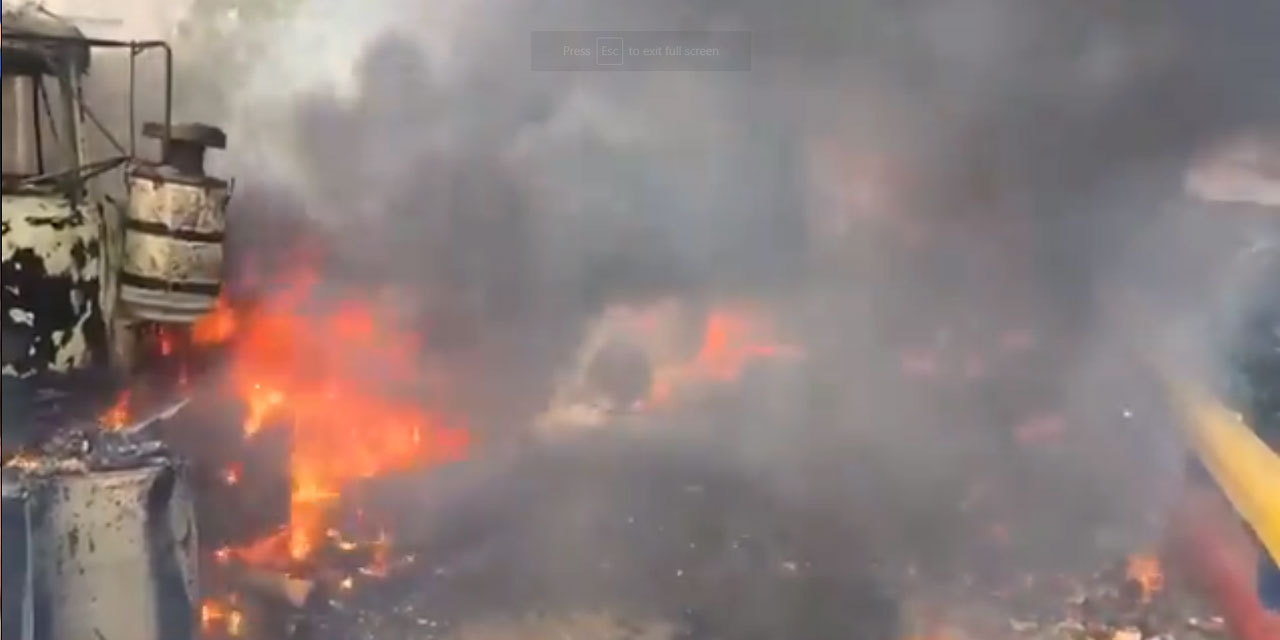Colombia’s President Ivan Duque on Saturday blamed Venezuela’s border authorities of burning trucks with American aid, but this is not supported by evidence or witness accounts.
The trucks caught fire while the Venezuelan National Guard were firing teargas at the caravan and hooded men threw Molotov cocktails and rocks at the armed forces of the neighboring country.
The incineration of the trucks effectively blocked the bridge connecting the two countries and ended opposition leader Juan Guaido’s attempt to enter food supplies and medicine into his native country.
How “humanitarian aid” escalated to “MilitaryInterventionNOW”
The blame game about the incident began almost immediately after the violence erupted that according to Colombia’s foreign ministry left at least 285 people injured, most because of tear gas.
In a press conference, Guaido went as far as accusing his country’s security forces loyal to authoritarian President Nicolas Maduro of having committed a crime against humanity.
We continue to receive the support of the international community, which has been able to see, with its own eyes, how the usurper regime violates the Geneva Protocol, which clearly states that destroying humanitarian aid is a crime against humanity.
Venezuelan opposition leader Juan Guaido
The world could see how today food and medicines were burned that were incinerated and that, surely, could have saved lives in Venezuela.
Colombian President Ivan Duque
United States Senator Marco Rubio from Florida said on Twitter that “the grave crimes committed today by the Maduro regime have opened the door to various multilateral actions not on the table just 24 hours ago.”
Opponents of Maduro, whose reelection earlier this year has not been recognized by many countries in the west because of widespread fraud claims, began calling for “MilitaryInterventionNOW” on Twitter.
Enter the conspiracy theorists
Social media users critical of the official explanation showed images and videos of hooded young men preparing and throwing Molotov cocktails. A journalist of Venezuela’s state-funded news network Telesur showed images of a man pouring gasoline over one of the burning trucks.
https://twitter.com/graffitiborrao/status/1099488000986304513
Estas fotos te muestran los verdaderos responsables de la quema de las 3 gandolas en frontera de Vzla y Colombia. Estas fotos desmienten las noticias sobre autoría de la Guardia Nacional Bolivariana. @madeleintlSUR @ErikaOSanoja pic.twitter.com/hHyRgrm93T
— Patricia Villegas Marin (@pvillegas_tlSUR) February 23, 2019
One video from the chaotic scene showed Venezuelan opposition deputy Jose Manuel Olivares being punched by a protester and being surrounded by men mentioning “payment.”
https://twitter.com/elfreejolero/status/1099503171611840512
Pro-Russia website Fort Russ News subsequently concluded that “the Venezuelan opposition in Colombia decided to set the aid convoy on fire and blame Maduro.”
Evidence and witness accounts are inconclusive
None of the dozens of journalists reporting on the clashes have claimed or confirmed that the fire was started either by the Bolivarian National Guard, members of the pro-Maduro civilian militias or by the Molotov cocktails thrown by Venezuelan opposition.
The tear gas, rocks and rubber bullets made reporting virtually impossible.
This is me on tear gas pic.twitter.com/AL8pORv9QV
— Dylan Baddour (@DylanBaddour) February 23, 2019
The only thing that is evident is that what initially was spun as a “peaceful” attempt to enter his country escalated into mayhem.
The International Committee of the Red Cross, the international humanitarian agency that brings humanitarian relief to Venezuela’s suffering population, warned the US government about the risks of politicizing humanitarian aid and delivering food supplies and medicine without permission weeks ago, but were ignored.




